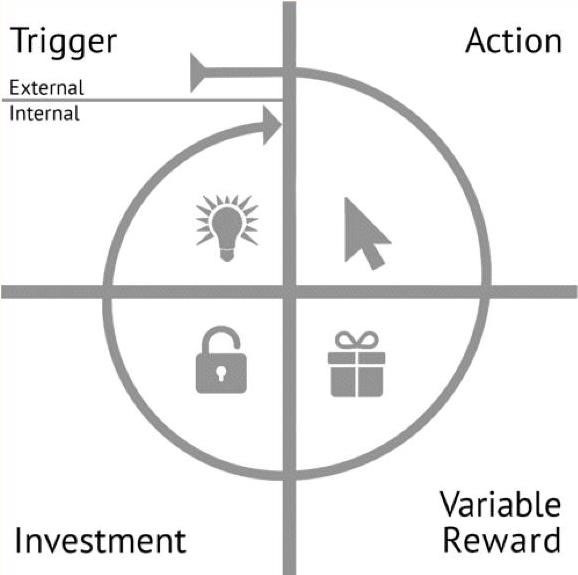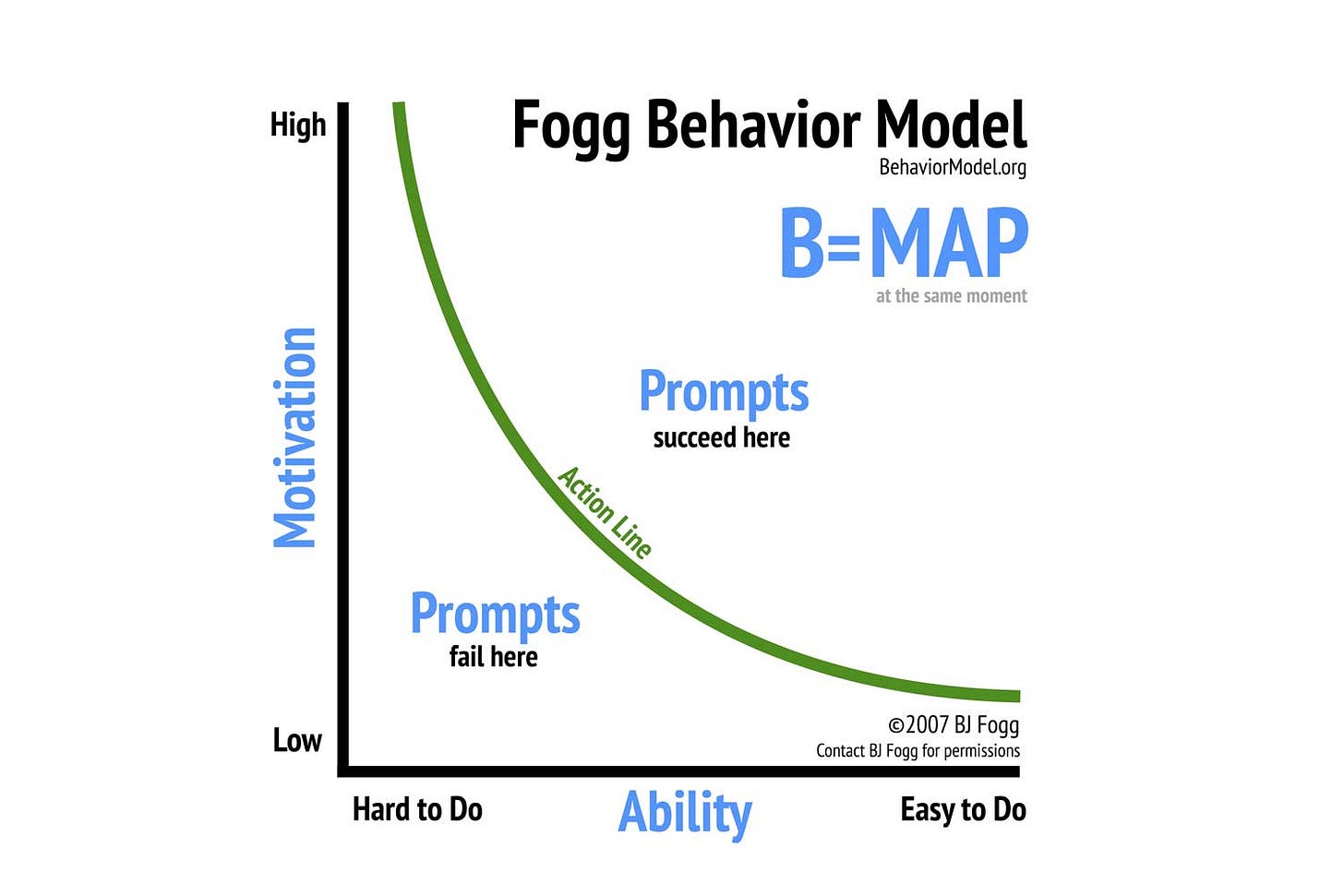The best behavioral frameworks for creating great products
Almost every problem in technology involves asking someone to take an action. Try a new feature, press a button, form a new habit.
When you’re building new features and products, you can never underrate how hard it is to influence behavior and ask your users to take a new action.
This newsletter is all about how to apply the latest in behavioral science and psychology to help your users make the best decisions for themselves.
To get us started, we’re going to explore the best playbooks and frameworks for thinking about behavior. These are useful for product managers for two reasons:
They place your user and their behavior at the centre of your product development. If you apply these frameworks as you generate product solutions, you will make sure you are not forgetting the hardest job of any tech product - influencing individual user behavior.
They provide heuristics that capture decades of psychological research into an easy checklist. No product lifecycle should be completed without at least a momentary run through of the questions these frameworks generate.
Finally, a quick note on the ethics of using tools to influence behavior. It is important that you are transparent about the methods you use, don’t restrict choice, and help people make the best decisions for themselves.
As Richard Thaler, Nobel Prize winner for his work in behavioral economics, says: nudge for good.
The EAST Framework
The UK’s Nudge Unit (my former employer) is most famous for sending out a tax letter that informed the reader that 9/10 people pay their taxes on time. Not only was this statistic true, it increased the number of people paying their taxes on time. The Nudge Unit summarised their work - and decades of psychology - into a simple framework. If you want to change someone’s behavior, make sure the action is easy, attractive, social, and timely:
Easy: Use defaults, reduce hassle, keep it simple
Attractive: Design for attention
Social: Use social norms, encourage networks, and get people to make commitments to others
Timely: Prompt people when they will be most receptive, help people make plans
Before landing on a solution and feature, you can ask your team: how can we make this easy, attractive, social and timely?
The Hook Model
Released in 2013 Nir Eyal’s Hooked quickly became a must read in tech. It formalised a simple model to drive user engagement and retention. Sadly, it also helps explain some of the most annoying or addictive aspects of the internet (see any mobile game as an example).
As a product manager, you need to use tools with caution to ensure you are creating long-term value for your users and not just short-term hedonism. If you keep that in mind, Hooked still provides a useful framework for considering how to prompt users to try a new feature or develop a new habit.
It promotes four core activities as required in habit-forming products:
Trigger: An event that prompts the user to your product. This can be internal (boredom, stress, fatigue) or external (social media notifications)
Action: The simplest behavior completed by the user in anticipation of a reward (e.g. make a comment)
Variable rewards: The incentive that gets us to take action (e.g. get a like on a comment)
Investment: The time and effort it takes to use the product, minimise time to achieve a reward, and form actions as a new habit
In particular, the model is useful for product teams for thinking clearly about how a user will encounter or sign-up to their feature, have their ‘aha moment’ and get the reward needed to ensure it develops into a new habit.
Robert Cialdini’s Influence
First published in 1984, Influence is one of the longest standing and most influential books on human behavior. Cialdini’s work identified six tools of influence that have been widely referenced and used in product design:
Reciprocity: We want to repay gifts that we receive
Commitment: Once we’ve make a choice or taken a stand, we feel pressure to behave consistently with that commitment
Social proof: We look to others to determine what is correct
Authority: We are taught to respect the word of experts
Liking: We are easily persuaded by people we like
Scarcity: Perceived scarcity will generate demand for almost any product
Like EAST and Hooked, these six areas can act as a useful checklist for product teams thinking about how to influence user action and decisions.
COM-B
Academics Susan Michie, Robert West and Maartje van Stralen introduced a model for thinking about behavior change that’s become hugely influential in policy circles - but equally applies to tech. COM-B suggests that any behavior is the combination of three elements:
Capability: Can you do it?
Opportunity: Do you have the time, resources, social support?
Motivation: Do you want to do it?
This framework can be especially useful as it prompts product teams to think of the wider environment of their users and the barriers that may prevent action. For instance, with HR tech tools it is little use sending an automatic email if, as is the case with many frontline workers, users don’t actually have a company email. When introducing a new feature, ask whether your users have the capability, opportunity, and motivation to actually complete your desired action.
Fogg’s Behavior Model or B=MAP
Fogg’s Behavorial Model suggests that three elements need to be satisfied before an action will take place:
Motivation: The user needs to be sufficiently motivated to take action
Ability: The user needs to have the skills, knowledge or resources to take action
Prompts: The trigger that prompts a user to action
Fogg’s visualisation of the model (below) is particularly useful for product teams. Often a team will think notifications are sufficient to get a user to consider an action. But, as the model suggests, if motivation is low and the action is hard to do, prompts will not work and just add to the noise your product may already generate.
These are five of my favorite frameworks for thinking about how to prompt user behavior and habits. As you can see, they share a lot in common.
EAST, Hooked and Influence are often great frameworks to consider tactical improvements to your product whilst COM-B and B=MAP are useful for taking a step back and ensuring you are thinking through the entire environment or ecosystem that your user is operating within - behavioral science is more than just nudges.
All are important models for ensuring you understand your users and have them at the forefront of your mind when designing your product.



